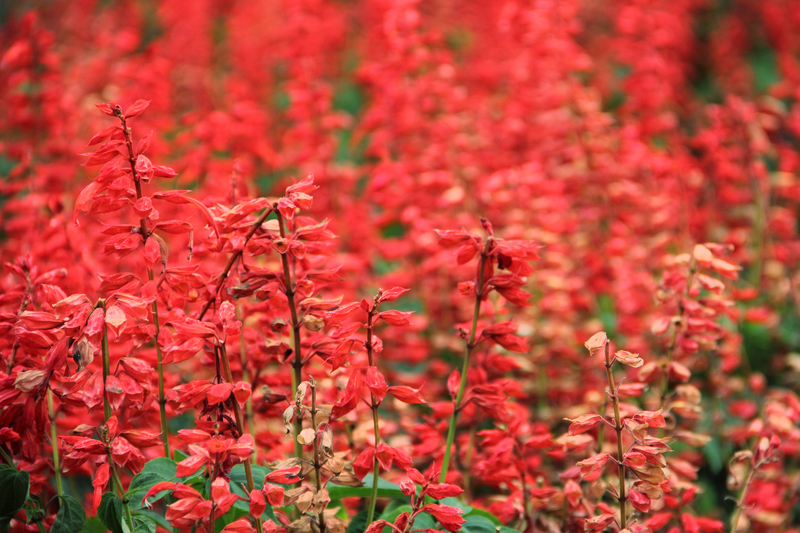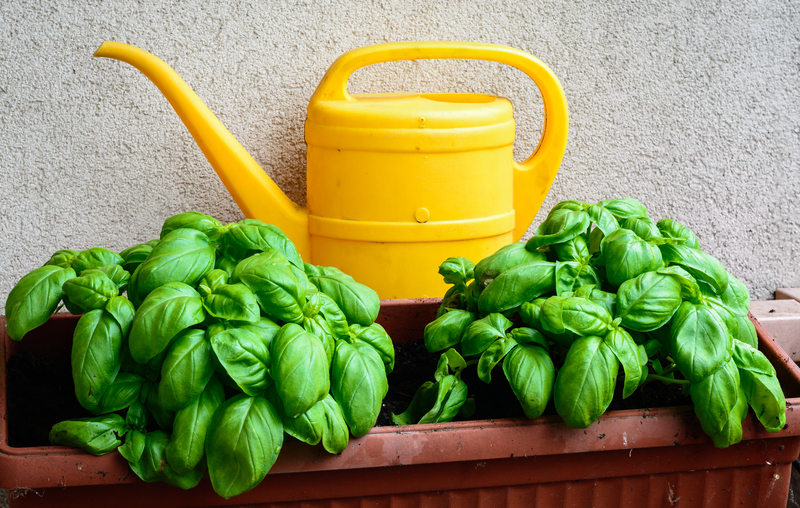Breathing New Life into a Forgotten Garden Space
Posted on 28/05/2025
Breathing New Life into a Forgotten Garden Space
Is there an overgrown corner or disused plot in your yard that you've been meaning to address? Many homeowners and gardening enthusiasts find themselves confronted with a neglected or forgotten garden space--a once-loved area that's fallen to weeds, debris, or simply time. Rediscovering and rejuvenating these areas can transform not just your garden, but also your outdoor living experience, adding value and bringing newfound beauty to your home.
Why Restore a Neglected Garden Space?
Revitalizing an abandoned garden area has profound benefits beyond just aesthetics. Here are a few compelling reasons to breathe new life into an overlooked garden spot:
- Increases property value: A well-tended garden enhances curb appeal and can boost real estate prices.
- Improves wellbeing: Green spaces promote relaxation, lower stress, and encourage outdoor living.
- Supports biodiversity: Introducing diverse plants can attract pollinators and local wildlife.
- Maximizes usable space: Reclaiming every corner increases your options for leisure, entertaining, and gardening.

Step-by-Step Guide to Revitalizing Forgotten Garden Spaces
1. Assessing the Situation
Begin by taking a thorough inventory of your neglected garden plot. Note any existing features such as old shrubs, trees, hardscaping, and potential hazards like broken glass or unstable structures.
_Ask yourself:_
- What is the size and shape of the space?
- What is the condition of the soil?
- How much sunlight does it receive?
- Are there drainage issues or signs of pests?
These observations will inform your renovation plans and plant selections.
2. Clearing and Cleaning
The first and possibly most daunting step is clearing out debris, overgrown plants, and rubbish.
- Remove broken pots, litter, and unwanted garden structures.
- Pull up weeds and invasive species, making sure to get roots to prevent regrowth.
- Prune or remove dead or diseased plants and branches.
- Dispose of all waste responsibly--consider composting organic material.
A clean slate makes it easier to reimagine possibilities for this neglected garden space.
3. Soil Revitalization
For breathing new life into forgotten garden spaces, healthy soil is crucial. Years of neglect can lead to compacted, nutrient-poor ground.
- Loosen soil with a garden fork, breaking up clumps and removing rocks.
- Add generous amounts of compost or well-rotted manure.
- Mix in organic matter such as leaf mold or peat-free mulch to improve structure.
- Test pH if possible, and amend as needed for your chosen plants.
Blending in these natural materials will improve drainage, fertility, and help plants thrive.
4. Planning and Designing the New Space
Now comes the creative part: reimagining your garden's potential. Take inspiration from garden magazines, social media, or even local parks. Consider these design elements:
- Themed gardens (wildlife-friendly, cottage, xeriscape, edible, etc.)
- Paths and walkways for easy access or visual interest
- Focal points like a birdbath, sculpture, or feature plant
- Zones for seating, planting, or children's play
- Raised beds or containers for problematic soil
Sketch a simple plan on paper or use free garden design apps to map ideas before planting.
Creative Ideas for Transforming Overlooked Garden Areas
Rewild with Native Plantings
Embrace the rewilding trend by planting wildflowers, grasses, and shrubs native to your region. These gardens are low maintenance, great for pollinators, and bring a sense of natural beauty to forgotten spaces.
Install a Shade or Woodland Garden
If your garden space is shaded by mature trees or buildings, choose shade-loving plants like ferns, hostas, or woodland bulbs. Layer plants of different heights for a lush, green oasis perfect for relaxation.
Create a Secret Garden or Hideaway
Transform a disused corner into a private retreat with a bench, flowering vines, and screening shrubs. Add fragrant plants like jasmine or honeysuckle for a multi-sensory experience.
Build a Productive Edible Garden
Why not turn your neglected spot into a mini kitchen garden? Raised beds, containers, and vertical planters can make even the most problematic nook productive. Grow
- Herbs such as basil, mint, or rosemary
- Salad greens or root vegetables
- Compact fruit bushes
Fresh harvests from your formerly forgotten space will bring joy throughout the seasons!
Incorporating Hardscaping and Features
Add Pathways and Edging
Define your new space with simple gravel or stepping stone paths. Natural wood, bricks, or metal edging can keep borders tidy and plants contained.
Install Lighting for Ambiance and Safety
Outdoor solar lights, string lights, or lanterns can highlight features, improve nighttime safety, and extend enjoyment of your revitalized garden area.
Water Features and Wildlife Habitats
Integrate a birdbath, small pond, or even a bug hotel to invite nature back into your reclaimed garden. Water features attract birds, bees, and beneficial insects, creating a dynamic ecosystem.
Seating and Social Spaces
Don't overlook the value of a simple bench, hammock, or picnic table. Encouraging people to spend time in your reimagined garden space reinforces its transformation.
Best Plants for Reviving Forgotten Garden Spaces
Selecting resilient, low-maintenance plants is a smart choice when bringing new life to tired gardens:
- Hardy perennials like lavender, daylilies, sedum, and rudbeckia
- Climbers such as clematis or climbing roses for vertical interest
- Ground covers like creeping thyme, ajuga, or vinca minor to smother weeds
- Ornamental grasses for movement and texture
- Native wildflowers and pollinator plants such as echinacea, milkweed, and asters
_Choose plants suited to the site_ (sun/shade, dry/wet conditions) for best results.
Maintenance Tips for a Thriving, Rejuvenated Garden
To ensure your transformed garden remains vibrant year after year, consider:
- Mulching to suppress weeds and retain soil moisture
- Regular pruning and deadheading to encourage blooms
- Seasonal feeding with organic fertilizers
- Monitoring for pests and diseases
- Refreshing mulch and compost annually
Eco-Friendly Care Practices
Personalizing Your Revitalized Garden Area
Make your restored garden space uniquely yours. Add
- Garden art or quirky ornaments
- Children's play equipment or sensory features
- Custom plant markers or painted stones
- Outdoor rugs or cushions for color and comfort
- Herb spirals or vertical gardens for creativity and productivity
_Your garden is an extension of your personality and lifestyle--don't be afraid to express yourself!_
Common Challenges When Transforming Forgotten Gardens
- Persistent weeds or invasive species - Tackle with repeated digging, mulching, and possibly professional advice for serious issues.
- Poor soil fertility - Gradually restore with compost, green manures, and soil conditioners.
- Lack of sunlight - Choose shade-tolerant plants and reflective surfaces to maximize available light.
- Drainage problems - Improve with raised beds, French drains, or absorbent plant species.
- Limited budget - Upcycle materials, use plant swaps, and incorporate easy-to-grow perennial divisions.
Real-Life Success Stories
Many have succeeded at breathing new life into neglected garden spaces. From urban courtyards to rural plots, homeowners and communities share tales of transformation--reviving biodiversity, creating sanctuaries, and enjoying new outdoor living rooms.
*These personal projects often inspire neighbors and spark a love for horticulture and sustainability.*

Conclusion: Transform a Forgotten Garden into a Vibrant Sanctuary
Breathing new life into forgotten garden areas is deeply rewarding. With planning, creativity, and patience, you can reclaim neglected spaces and turn them into lush, welcoming retreats for both people and wildlife.
*Don't let those disused corners, shady nooks, or overgrown beds go to waste. Start today--assess, clear, plan, and plant. Reinvigorate your garden and watch as a once-overlooked spot blossoms into your favorite outdoor sanctuary.*
Frequently Asked Questions: Revitalizing Neglected Garden Spaces
- How much does it cost to restore an overgrown garden?
Costs vary widely, but DIY projects using recycled materials and plant swaps can rejuvenate small areas for less than $100. For larger spaces or complete redesigns, a budget of several hundred to a few thousand dollars is typical, especially if hiring landscapers. - Can I revive a garden with very poor soil?
Absolutely! Start by incorporating lots of organic matter, use raised beds or containers with fresh compost, and select resilient plants for poor soils. - What are the best low-maintenance plants for neglected gardens?
Consider native wildflowers, ornamental grasses, sedums, lavender, daylilies, and ground covers like creeping thyme for easy-care beauty. - How long does it take to fully transform a forgotten garden space?
Most gardens begin to improve within a season, but true transformation and maturity can take 1-3 years, depending on scale and plant choices.
Remember: With vision, effort, and the right approach, every forgotten garden space holds the promise of renewal. Roll up your sleeves and begin your own transformation today!

